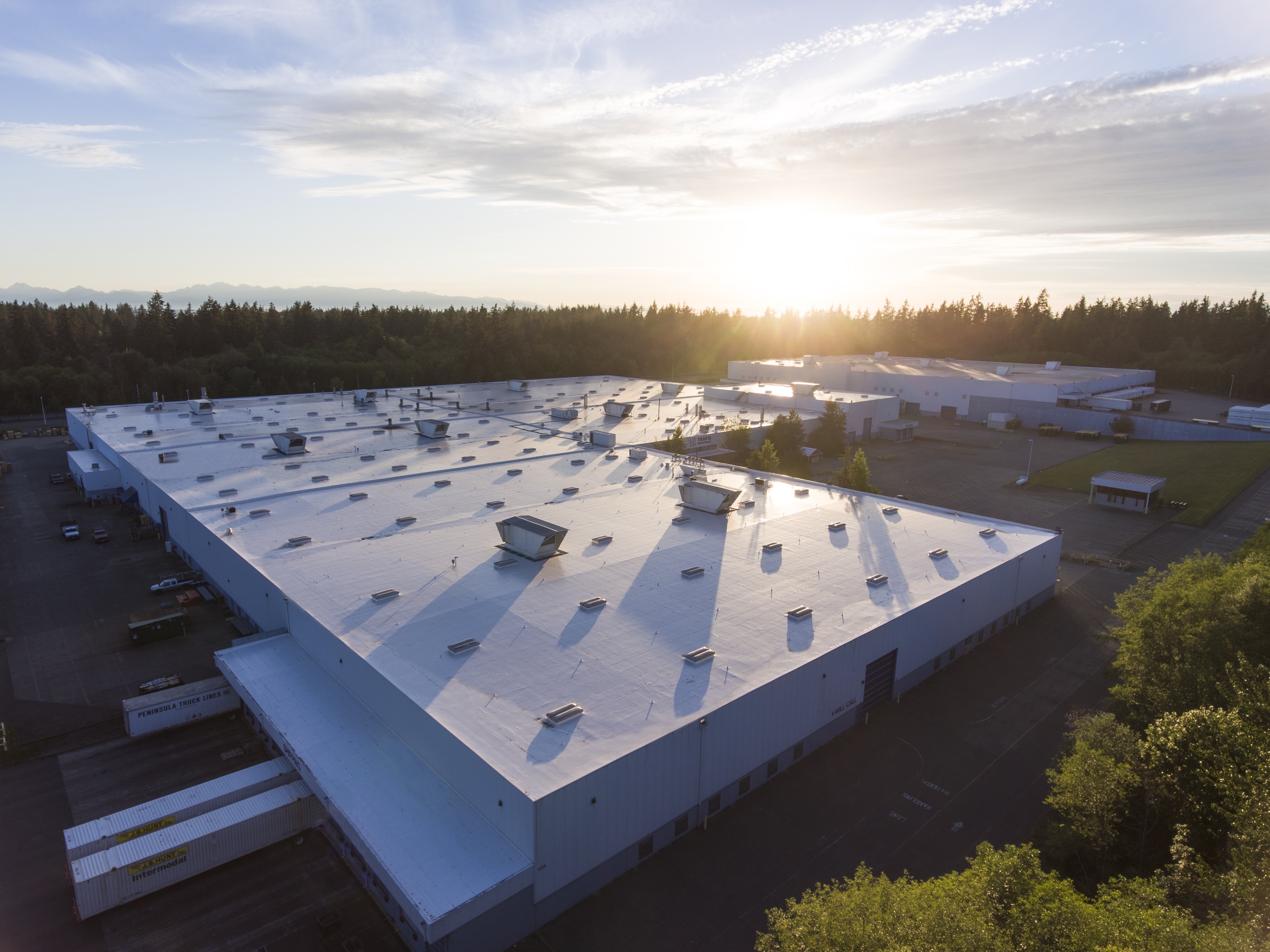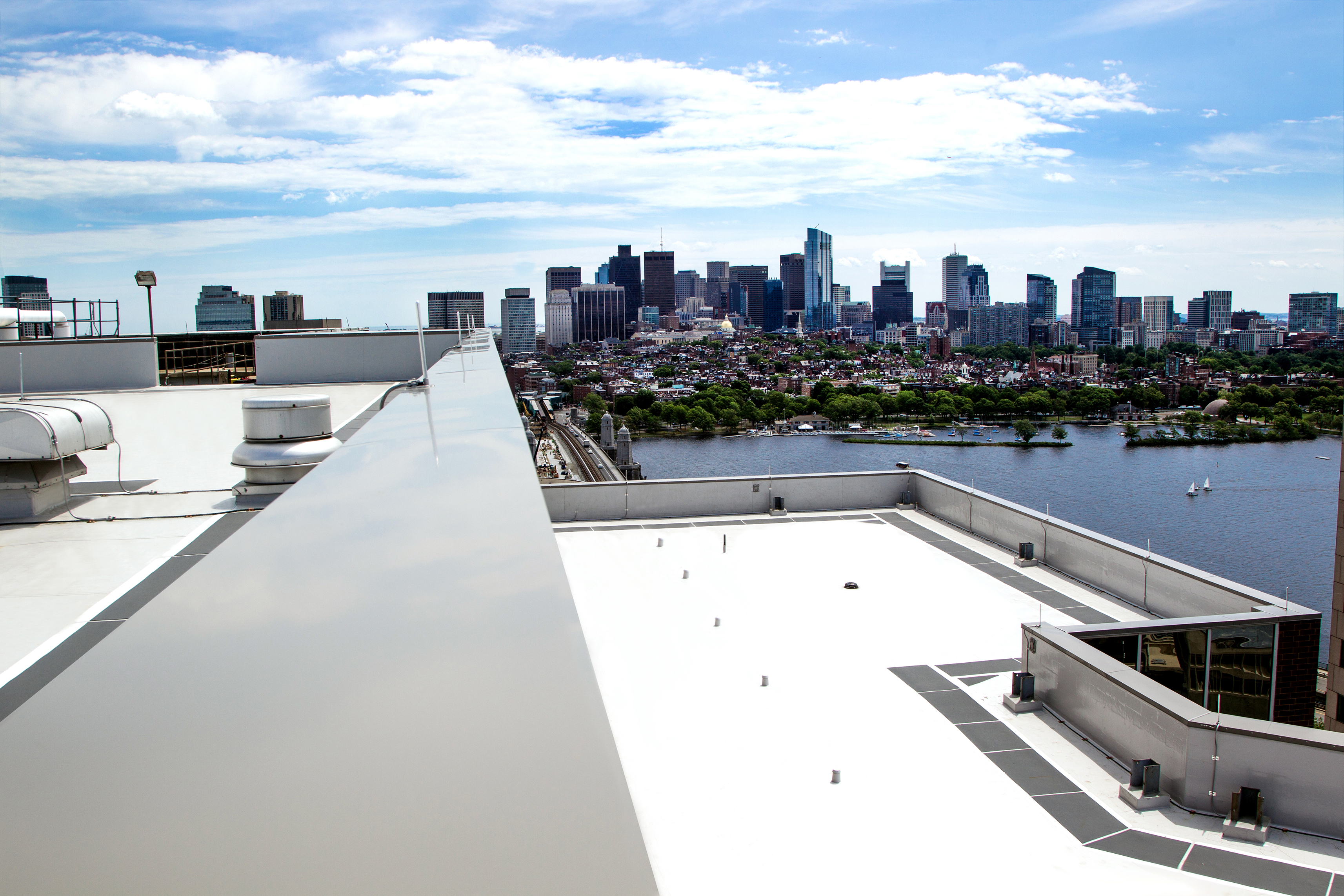Cool Roofs for a Hot Planet
Learning Objectives:
- Discuss the science and background of cool roofing systems.
- Describe the basics of thermoplastic single-ply roofing.
- Identify myths and realities of PVC cool roofing.
- Describe the role cool vinyl roofing plays in sustainable building design.
- Identify key criteria for roof selection.
Credits:
Many scientists agree that the planet is warming quicker than the natural forces of nature have ever brought about, and those scientists maintain that such quickening is caused in large part by human activity.
As the planet warms, the world’s population continues to move into urban areas that are heating up at twice the rate of global warming due to human activity, lack of vegetation, and the use of dark roofing and paving materials.
This article discusses the role of cool, reflective roofing, and specifically the role of PVC roofing as a way to decrease energy use and thereby decrease emissions. PVC single-ply roofing deflects heat from buildings, decreases energy use, mitigates urban heat islands, and serves as a durable platform for photovoltaic systems and vegetative roofs.

Photo courtesy of Duro-Last, Inc.
As the planet heats and cities heat even further, cool roofing systems are an effective method to keep buildings cool, protect insulation and substrates, and deflect solar energy back into the atmosphere and beyond.

Image courtesy of NASA’s Earth Observatory
This line plot shows yearly temperature anomalies from 1880 to 2018, indicating rapid warming in the past few decades, with the past decade the warmest.
What is a Hot Planet?
We have always lived in a greenhouse of sorts. The atmosphere traps the heat of the sun, which allows living beings to live and thrive. Many scientists maintain the expansion of that greenhouse effect, via gases that block solar heat from escaping back out of the atmosphere, causes the planet to heat up at a rate too quickly for nature to adapt.i The U.S. Dept. of Defense considers climate change “an urgent and growing threat to our national security”.ii
Earth's global surface temperature in 2018 was the fourth warmest since 1880, according to independent analyses by NASA and the National Oceanic and Atmospheric Administration (NOAA). The past five years are, collectively, the warmest years in the modern record.
According to NASA, the world’s leading climate research agency: “Multiple studies published in peer-reviewed scientific journals show that 97 percent or more of actively publishing climate scientists agree: Climate-warming trends over the past century are very likely due to human activities. In addition, most of the leading scientific organizations worldwide have issued public statements endorsing this position.”
Those issuing statements regarding climate include: the American Chemical Society, the American Medical Association, U.S. National Academy of Sciences, American Geophysical Union, American Meteorological Society, and the Intergovernmental Panel on Climate Change.iii
Additionally, cities are growing at an incredible rate worldwide—and they are heating up at a faster rate than global averages. They are particularly vulnerable to heat-related issues like air quality and health issues from heat. While most people don’t think about roofs, they can be 25 percent to 30 percent of total city area, making them a significant platform for urban sustainability that most people never have to interact with or notice. But roofs can be a part of the solution of hot cities. Roofs tend to be replaced more frequently than a building is retrofitted, so the rate of change (and rate of results) can be relatively quick. In short, smart roof usage is a climate strategy because it is immediately effective across a broad spectrum of benefits, and can be rolled out relatively quickly with good policy and good business decisions.

Photo courtesy of Duro-Last, Inc.
Cool roofs deflect solar energy away from a building and back to the atmosphere and beyond.











